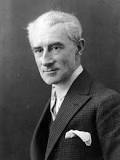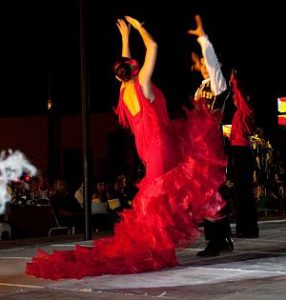But first, the Paraprosdokian of the week —
If you can smile when things go wrong, you have someone in mind to blame.
Yesterday, I was about fifteen minutes from home when I turned on Sirius radio and was fortunate to hear the opening bars of Ravel’s Bolero. I immediately slowed down, not wanting to arrive before the dramatic finish of the piece.
Maurice Ravel wrote the piece at the request of the Russian actress and dancer Ida  Rubinstein. It premiered at the Paris Opera in November 1928—as a musical selection, with no dance—and, to Ravel’s surprise, was an immediate success. It was reported that he said, “I had written a piece lasting seventeen minutes and consisting wholly of ‘orchestral tissue without music’ — of one very long, gradual crescendo. There are no contrasts, and practically no invention except the plan and the manner of execution.”
Rubinstein. It premiered at the Paris Opera in November 1928—as a musical selection, with no dance—and, to Ravel’s surprise, was an immediate success. It was reported that he said, “I had written a piece lasting seventeen minutes and consisting wholly of ‘orchestral tissue without music’ — of one very long, gradual crescendo. There are no contrasts, and practically no invention except the plan and the manner of execution.”
But in spite of the composer’s downplay of the piece, it became his most famous work. When Conductor Arturo Toscanini conducted the US premier in 1929, it received shouts and cheers from the audience and a standing ovation.
There are some who say it is too repetitious, monotonous, and uninspired. They are missing the true genius of the Bolero. Ravel created two memorable themes, and then used them to create interest and tension. Yes, the main theme is repeated eighteen times, but with many different instruments picking up this theme with diverse orchestration. At one point, the first theme is played in one key while the second theme is being played in a different key. The piece starts out softly pianissimo and rises in a continuous crescendo to fortissimo possible (very loud). Ravel embellished the themes, altered the presentation, added drama, so that the Bolero leads the listener – propels the listener – to the powerful and dramatic conclusion.
The result is a piece that is dramatic, sensual, powerful. Memorable. Exciting.
While it was originally written for a dancer, it is rarely preformed to  accompany a dance. An exception to this is a group of young dancers in Puerto Vallarta, Mexico, the Xiutla Folkloric Dance Group. For its one thousandth performance, famous Spanish dancer Luis Montero was asked to choreograph a dance to The Bolero. He produced a dance that captures of drama and excitement of Ravel’s piece. The group has now preformed this dance many times and it never fails to bring the audience to its feet, cheering, clapping, and asking when the group will perform the dance again so they may attend.
accompany a dance. An exception to this is a group of young dancers in Puerto Vallarta, Mexico, the Xiutla Folkloric Dance Group. For its one thousandth performance, famous Spanish dancer Luis Montero was asked to choreograph a dance to The Bolero. He produced a dance that captures of drama and excitement of Ravel’s piece. The group has now preformed this dance many times and it never fails to bring the audience to its feet, cheering, clapping, and asking when the group will perform the dance again so they may attend.
I arrived home before the end of the piece, so I just sat in the car to hear the striking finish. I was not disappointed. That’s part of the power of music. You can hear a piece many times, but the repetition doesn’t diminish the pleasure, the excitement.
Ravel understood that.
If you have listened to the Bolero, give us your thoughts on the music. Thanks.
James R. Callan, 2016
